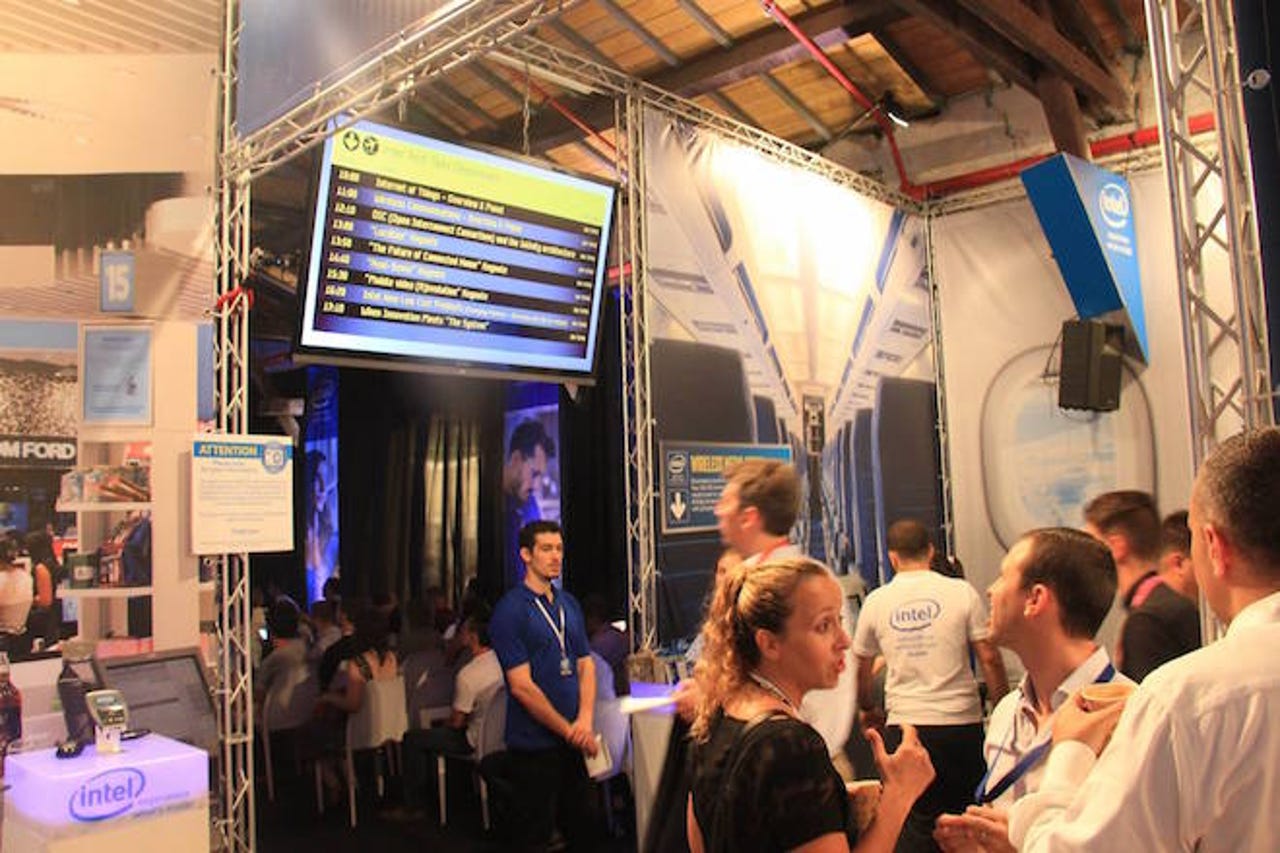How Intel is helping battle Parkinson's with big data


That approach extends to Intel's big-data platform, said Assaf Araki, an Intel big-data analytics architect.
"We've done a lot of work on projects, like the one we're partnering with the Michael J Fox Foundation on, to fight Parkinson's disease. But that doesn't mean we're going to develop a publicly-available big-data platform. We do, however, use our big-data platform internally, creating solutions for a wide variety of issues in the development of technologies."
Araki was talking during the recent DLD festival in Tel Aviv - Israel's biggest annual tech event - where the company's latest technology was on display. But it wasn't only about the hardware. It was also about applications.
The booth was built around the theme of a near-future smart airport based on Intel technology, with visitors checking in at the entrance by having their faces scanned using an Intel RealSense camera, and identified with their check-in details using face recognition tech with the True Key application.
See also
Indoor location services showed users where they were located at the 'airport', with devices using the new 8270 wi-fi chipset, and a Wireless Media Kiosk let users download a movie in seconds to an Intel tablet, for viewing while on the flight.
While the booth did not feature any brand-new technologies - True Key was announced at CES this year, while the 8270 chipset was introduced at MWC - the novelty of the smart airport display was in demonstrating how the tech could be used in real-life scenarios, in off-the-shelf products that Intel could, if it chose to, sell by itself.
But the company chooses not to - preferring to allow its partners to put their name on the products and opting to remain in the background - or 'inside', as Intel calls it.
In the case of big data, in March last year Intel invested $740m in Cloudera, giving the chip giant an 18 percent stake in the Hadoop firm.
Despite not having a publicly-available big-data platform, Intel is using its internal big-data muscle to research Parkinson's treatments, said Araki.
The data is collected from patients using various Intel-designed devices that collect more than 300 observations per second from each patient. The analysis uses open-source platforms, including Cloudera CDH, and is deployed on an Intel-optimized cloud, where scientists can develop applications to measure the progress of the disease and the response of patients to treatment.
The platform supports an analytics application developed by Intel to process and detect changes in the data in real time. By detecting anomalies and shifts in sensor and other data, the platform can provide researchers with a way to measure the progression of the disease objectively.
In the near future, the platform could store other types of data such as patient, genome, and clinical trial data. In addition, the platform could enable other advanced techniques such as machine-learning and graph analytics to deliver more accurate predictive models that researchers could use to detect changes in disease symptoms.
These advances could provide new insights into the nature of Parkinson's disease, helping scientists measure the efficacy of new drugs and assisting physicians with prognostic decisions.
"Our algorithms identify tremors, gait, blood flow, and other pertinent information," Araki said. "We're collecting about a gigabyte of data per day about patients. The objective is to collect and analyze as much data as we can about these patients, which will hopefully lead to a breakthrough in Parkinson's."
It's similar to the work IBM is doing with Watson, which is currently focused on medical technology. Microsoft has also dedicated a good chunk of its Azure Machine Learning big-data platform to medical tech, analyzing streams of data collected by its Band devices. And both those companies have made their big-data platforms available to researchers and programmers to develop apps that will help cure not only Parkinson's, but Alzheimer's, cancer, and heart problems.
But even here, Araki said, Intel prefers to stay out of the spotlight. "We've partnered with several companies on big data and are developing other projects similar to our Parkinson's project. But we're not competing with anyone on these projects. When it's needed, we'll open up our platform to help. We're a very patient company, with a very clear direction."
Read more about big data